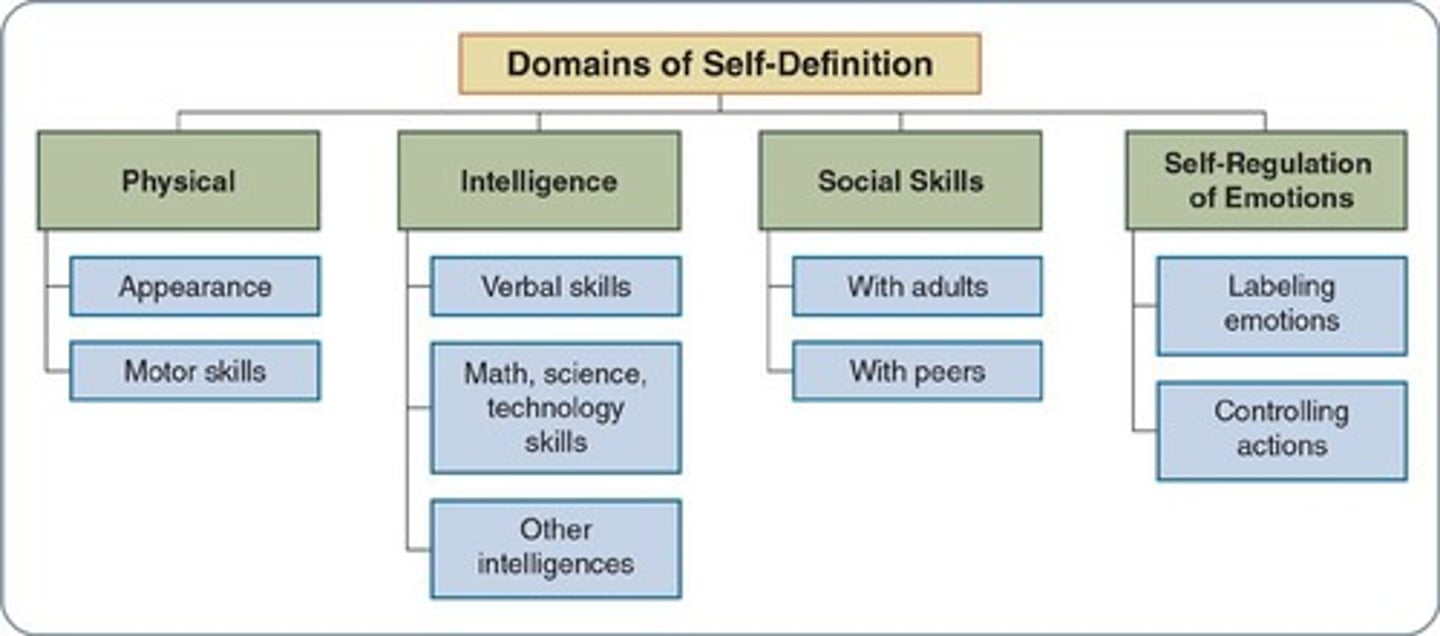Social-Emotional Development in Children and Teens
1/26
There's no tags or description
Looks like no tags are added yet.
Name | Mastery | Learn | Test | Matching | Spaced |
|---|
No study sessions yet.
27 Terms
Social Competence
Ability to interact effectively within society.
Peer Influence
Peers become crucial for social development.
Stress in Adolescence
Increased stress from social interactions.
Identity Development
Children develop a sense of self and morality.
Self-Awareness
Understanding personal responsibilities and roles.
Work Ethic
Sense of responsibility towards work tasks.
Gender Roles
Expectations based on gender learned from various sources.
Moral Conscience
Understanding right from wrong based on social norms.
Kohlberg's Morality
Stages of moral development in children.
Interpersonal Conformity
Behaviors accepted for benefiting social groups.
Maintaining Social Order
Belief in following societal rules.
Gilligan's Theory
Women's morality focuses on care and empathy.
Moral Character
Influenced by caregivers' love and role modeling.
Moral Emotions
Feelings like guilt and shame affecting behavior.
Self-Concept
Definition of self through cultural domains.

Industry vs. Inferiority
Erickson's stage focusing on competence development.
Identity vs. Role Confusion
Erickson's stage of self-discovery during adolescence.
Friendship Dynamics
Evolving nature of friendships from utility to cooperation.
Peer Groups
Provide community feelings and influence self-concept.
Emotional Expression
Learning socially acceptable ways to express feelings.
Need for Love
Desire for acceptance from peers and adults.
Fear of Future
Anxieties about future events and social interactions.
Imaginary Audience
Feeling of being constantly observed by others.
Anger Management
Older children express anger more verbally and indirectly.
Jealousy in Adolescence
Increased social comparisons lead to heightened jealousy.
Sources of Stress
Home, school, and peer relations contribute to stress.
Signs of Stress
Indicators include disordered eating and withdrawal.